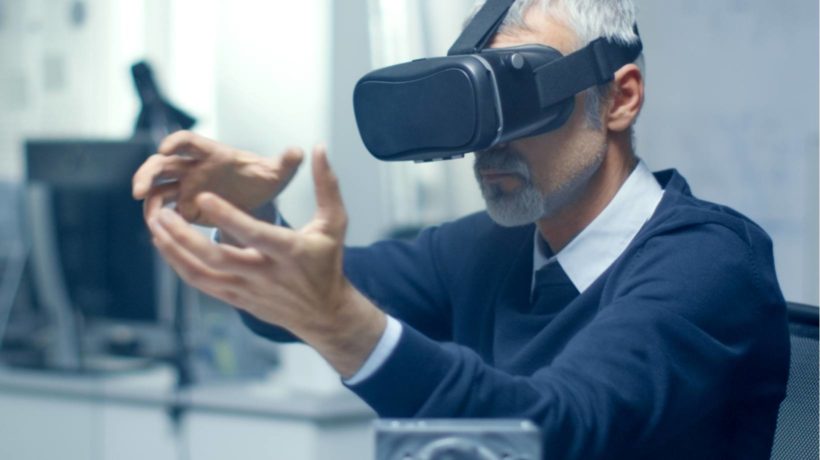Why Is The Role Of A Learning Technologist So Important?
Nowadays, many companies and education facilities leverage technology to offer training and learning opportunities to their employees and students. This is where technologists come into play since they thoroughly research the most appropriate technology for a specific learning environment. Any business sector that wants to provide learning, training, and upskilling opportunities to its workforce, learners, and customers can benefit from these professionals. Technologists are responsible for using various technological methods to curate digital learning content. Also, they strive to make the content as engaging and interactive as possible by inserting multimedia elements and gamification features while managing the infrastructure. To successfully achieve these goals and provide technical support to participants, they must possess certain skills that will make learning accessible and flexible.
The Responsibilities Of Learning Technologists
Identify Technology Solutions
Learning technologists are responsible for searching for all the available technology solutions around digital learning. After identifying them, they must test each of them and make recommendations based on sustainability and effectiveness. Therefore, they collaborate with other professionals, including faculty, Subject Matter Experts, Instructional Designers, multimedia developers, and web developers. To create cutting-edge technology, they lead their team when it comes to technology-based decisions. They are responsible for integrating technological tools, building the final product, and doing the quality assurance and functionality tests. To achieve all these objectives, they must have a clear understanding of the specified Learning Management System (LMS) and style guide specifications.
Develop Learning Solutions
Technologists must create functioning content after deciding which technology is most suitable for a learning experience. They design and develop these tools, which can be anything from interactive activities to multimedia solutions. The latter can contain video, images, infographics, audio, animations, and social media. The varying formats enhance learning and fit the different preferences of each learner. Since technologists must engage participants with their learning content, multimedia is an excellent way to make the material stimulating and interactive. Interactive activities can include brainstorming sessions, debates between learners, peer review writing tasks, and games. This way, learners stay involved and don't lose focus.
Manage And Maintain Infrastructure
Learning technologists must manage and maintain the technology after successfully building an engaging and interactive learning environment. They must ensure that the material can be accessed by different devices, like computers, phones, and various browsers. They should check the material's functionality on a regular basis and implement any necessary software and vendor tool updates. Keeping everything up to date is essential so no data is lost, cyber threats are diminished, and users can have a better experience. Experimenting with new software, hardware, mobile, and cloud technologies that may elevate the existing technology is part of the job description.
Provide Support
After the learning material has been rolled out, technologists must continuously offer training and support to learners and faculty. Using new technology can be a struggle for many participants and managers. That's why they should stay in touch with everyone to offer solutions and further training on navigating the material. Also, they should communicate regularly with the LMS administration and the IT department for possible alignments to the learning data. Lastly, they can hold sessions for staff, learners, and faculty where each participant can share their thoughts on the courses. That way, they're able to improve or change their tech according to people's needs.
Skills Learning Technologists Must Possess
Technical Knowledge
Since learning technologists design and develop the technology supporting learning initiatives, they must be aware of educational and corporate systems. They should be familiar with software applications that allow them to edit photos and videos and create multimedia solutions. Additionally, their Instructional Design skills must be highly developed. For example, understanding how visual design increases attention and engagement is crucial. Using the right colors, fonts, graphics, text alignment, contrast, and an appropriate amount of repetition deems a learning course successful and is essential. Lastly, they must be good at storytelling to connect, build trust, and foster understanding with learners.
Communication Skills
From discussing their learning needs with stakeholders to collaborating with their team to create tools, communication is a pivotal part of the role. They should always be open to answering questions and guiding learners and faculty through any difficulty they may be facing. Also, they may need to oversee focus groups and listen to concerns. It's also necessary for them to be receptive to feedback and be able to discuss critical points.
Research Skills
Research is the first step in every technologist's demanding job tasks. They must educate themselves on all the available and most trending technological tools and advancements that can elevate the learning experience. This step goes hand in hand with testing every tool to check whether it fits a school's or company's objectives and learning needs. After doing detailed research, they should meet with decision-makers and provide them with their findings. Their critical thinking helps them include only the most appropriate solutions for those in positions of power and not swamp them with unnecessary information.
Leadership Skills
In large companies and educational facilities, technologists don't work by themselves. They have to collaborate daily with other professionals in the eLearning sector and make their demands and expectations clear. Instead of only planning their projects, they must lead their teams and ensure their plan is executed efficiently. Thus, they need to have sufficient training in project management, which also requires leadership skills. To be effective project managers, these professionals must be great team players, manage and organize their time and tasks, adapt to challenges, and resolve problems and conflicts. Lastly, they should be equipped to roadmap their projects and the timeline until completion.
Conclusion
With remote and hybrid work being so prevalent in the post-pandemic era, this is an exciting time to be a professional in the eLearning field. That said, becoming a learning technologist does have its fair share of professional challenges, and that's why you need to stay current with L&D trends and be ready to find technology-based solutions. Even if you lack formal training, discipline, dedication, and lifelong learning can open many doors for you.





